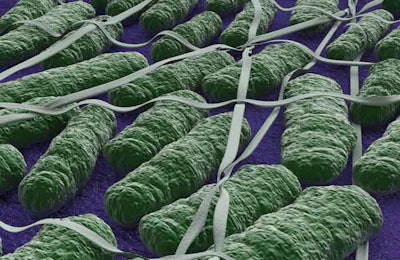
Well before the Food and Safety Modernization Act went into full effect in the U.S., the Food and Drug Administration (FDA) announced a zero-tolerance level for Salmonella in pet food. This was in response to several instances of Salmonellosis in the 2000s in people who came into contact with contaminated dry dog food.
Of course, these cases of Salmonella sickening and even causing deaths in people were very alarming and should have been prevented through robust safety and sanitation practices at the implicated pet food plants. Yet to many in the industry, the zero-tolerance level seemed a draconian response. More than 2,000 serotypes of Salmonella exist, so the pathogen is almost everywhere in the environment, and nearly all human food categories are allowed at least a minute tolerance for Salmonella. Was it right for pet food to seemingly be singled out?
One longtime pet food safety and quality expert—Michele Sayles, Ph.D., executive director of food safety and technology for Diamond Pet Foods—used to be in the camp that said no, FDA’s policy didn’t make sense. But she has since come to believe it’s a level “we have to stand by,” she said during an Ask the Pet Food Pro Zoom chat on pet food recalls held on April 28, 2021. “For a lot of my colleagues who know me, I say this a lot: We make infant formula that we just happen to feed to dogs.”
Salmonella: very low presence, typically not harmful to pets
Since FDA first issued its zero-tolerance policy, there have been dozens and dozens of pet food recalls based on detection of Salmonella—sometimes not even in the pet food itself but rather trace levels in the facility where it was produced. Raw pet food in particular has drawn the agency’s scrutiny, to the point that one company even sued FDA in 2019 over the policy.
Dry pet food certainly hasn’t escaped the Salmonella-caused recall curse over the years; in fact, at least three recalls of dry products have occurred so far in 2021 alone based on detection of the pathogen.
The singling-out perception for many industry members also stems from the fact that pets themselves—the intended, ultimate consumers of pet food—rarely become ill from ingesting Salmonella. It’s a human health issue that’s critical, but is it the industry’s responsibility when even most human food products or facilities might include microscopic levels of the pathogen, yet are allowed those levels?
The levels that may be detected in pet food plants or products are also typically microscopic. “Early on, I would say probably about 10 years ago, as an industry, we looked at what how much Salmonella is really out there,” Sayles said, in response to a question about her view on FDA’s zero-tolerance level and whether it was likely to change. “When you look at a dry extruded pet food, we’re talking about moistures 10% or less, and very low water activity. These aren’t typically products that support the growth of pathogens, let alone Salmonella.
“So when we get a positive [detection level] in the field, how much Salmonella is really there?” she continued. “When we went back and actually did some enumeration work, the industry found out that the levels of Salmonella that are present, when a dry extruded pet product reveals a presumptive or positive test, is actually extremely low. And we’re talking a fraction of a cell: 0.1 colony forming units per gram of food. So it’s barely a few cells of this organism” in total.
A level so low, she added, that it’s typically not likely to induce an adverse reaction in the pet.
‘Making human food we just happen to feed to pets’
So, in the ensuing 10 years, what has caused Sayles to believe that the FDA policy is here to stay? After many years of discussion in the industry and with FDA, agency representatives issued a rather stark assessment, she indicated. “FDA said, so would you like to tell your customer that a little bit is okay? Well, to my dog, it might be okay, but to my 2-year-old that could potentially go over to the dog food bowl and eat some kibble, could that two to three cells of Salmonella be injurious to health? Typically, depending on the strain of Salmonella, probably not. But there are over 2,000 strains of Salmonella, and there’s different virulence in a majority of those different strains. There are some strains that less than 10 cells can be very injurious.
“Again, I used to be in that camp that thought, gosh, zero tolerance just doesn’t seem right for the industry, because we know the levels that exist are so low,” Sayles continued. “Unfortunately, though, it’s harder to justify when our industry isn’t just charged with protecting the pet; we have to protect the pet parents, too, as well as the pet parents’ children—their real children, human children, as well as their fuzzy children.”
Thus, despite all the science and data proving the extremely low levels of Salmonella in pet foods or facilities, FDA’s zero-tolerance policy isn’t going away, Sayles said. “At the end of the day, how do you justify between the pet and the human? That’s the mentality a lot of us have now, is that we don’t just make pet food; we make human food that we just happen to feed to pets. So that’s the level we have to stand by.”
Editor’s Note: Ask the Pet Food Pro is a series of Zoom chats presented by Petfood Forum and comprised of Q&A and discussion with a pet food industry expert on a specific topic. The next chat is scheduled for May 25, 2021, with Ryan Yamka, Ph.D., founder of Luna Science and Nutrition, answering questions about pet food transparency.


















